-
Hyperthermia and
Hyperthermic Oncology.
The
fascinating evolution and benefits of heat
therapy - From
ancient Eygpt and Greece, to modern Japanese
and European hyperthermic oncology.
Hyperthermia, also
known as heat therapy or thermal therapy,
proven to combat and eliminate disease, dates
back thousands of years to the
ancient Greeks, Romans and Egyptians, as
well as to ancient civilizations in India,
China and Scandinavia.
Heat therapy has evolved in
leaps and bounds since those ancient times.
Originally hot water, steam and heated
blades were used. Modern hyperthermia now
uses directed far infrared (FIR) heat.
Far
Infrared Heat.
Far Infrared domes produce heat energy,
which is radiated directly to the body from
a very close distance between the unit and
the body area being targeted - far infrared
loses intensity the farther away it is from
the body. Far Infrared heat travels in a
straight line and generally penetrates to a
depth of 2-2 1/2 inches and is an absolutely
safe and natural therapy with no side
effects.
Western
Medicine vs Alternative
Although it has been known for many
centuries that heat helps the body combat
and eliminate illness and disease -
including malignant cell activity - the
enthusiasm of modern American cancer
research for this natural healing modality
has been unfriendly, lukewarm and sporadic
until recently.
It has been the alternative health community
and well-educated innovative hyperthermic
oncologists that have kept the access open
for patients worldwide particularly in
countries such as Europe (Germany), and Asia
(Japan).
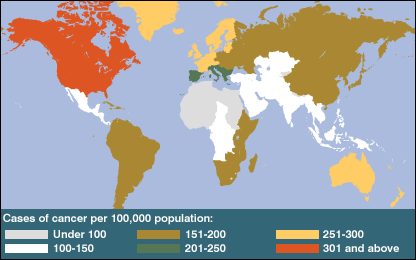
Conservative global
cancer statistics.
1 in 3 people will be diagnosed with
cancer.
Cancer
Therapy.
Hyperthermia is often combined with
conventional protocols to target cancer -
sarcomas, skin tumors and carcinomas of
the breasts, prostate, ovaries, lung,
stomach and skin. The temperature of the
cancer tissue is elevated by far infrared
heat energy - approximately 107 to 113
degree range - to weaken malignant cells.
History Of
Hyperthermia:
The term
hyperthermia is a combination of two Greek
words: hyper (rise) and therme (heat) and
refers to the increasing of body temperature
or selected tissues in order to achieve a
precise therapeutic effect.
The use of high temperature as a healing
protocol for various diseases was common in
various cultures since ancient times.
Primarily, the heat had sacral meaning and
was associated with the healing power of the
Sun. Therefore, it was used for the therapy
of locally affected human body parts or the
whole organism. For that purpose, hot water
and sand (mud baths) from natural thermal
springs, and hot air and steam occurring in
volcanic caves were utilized.
Eygpt:
The first known use of heat therapy was
carried out by an Egyptian aruspice named Imhotep
(2655 – 2600 B.C.). The Edwin Smith
Papyrus from about 1700 B.C., which is
probably a copy of a thousand year old text,
reports that the ancient Egyptians used the
so-called "fire drills" - hot blades and
sticks - for breast cancer.
These protocols involved the burning of
cancerous cells and had nothing to do with
elevated body temperature. It is worth
noting that the local and systemic
hyperthermic methods were also very popular
in ancient China and India.
Ancient
Greece:
In ancient Greece and Rome
many physicians shared the opinion that
knowledge how to control human body
temperature will allow them to cure all
diseases, including cancer, whose pathology
was well known and described in those days.
For example, the Greek philosopher Parmenides
(ca. 540 – ca. 470 B.C.) was deeply
convinced of the effectiveness of
hyperthermia as evidenced by the words: “Give me the power to
produce fever and I will cure all
diseases”.
This view was shared by Hippocrates (460
– 370 B.C.), a Greek philosopher and
scientist who is considered the “father of
medicine”. He claimed that the disease must
be incurable if it can not be cured by using
heat. Moreover, Hippocrates successfully
used heat to target breast tumors.
His medical practice was based on the
philosophy of ancient Greece, which
attributed the fire to the highest level of
intelligence and freedom. Heat therapy was
recommended after unsuccessful trials of
invasive procedures and when known drugs and
other methods failed. This conviction is
well illustrated by the words of
Hippocrates: "What
medicines do not heal, the lance will;
what the lance does not heal, fire
will".
Belief in the curative effect of fever was
also shared by Celsus (ca. 25 B.C. - 45
A.D.), a Roman author of the first
systematic treatise on medicine "De
Medicina" and Rufus of Ephesus, a
Greek physician who lived at the turn of the
1st and 2nd century. Celsus described the
hot baths as a tool in the treatment of
various diseases.
Germany:
In the 19th century
German physicians observed regression of
sarcoma in patients who suffered prolonged
high fevers due to infectious disease. In
NY, William Coley, a famous
oncologist at the time, used immunotherapy
toxins produced by a German pharmaceutical
company, known as Coley's toxins, to
induce fever (hyperthermia), and in
multiple documented cases, successfully
attack many types of cancer, from 1893
thru 1963.
He thus
showed again what has been recognized for
centuries, that elevated body temperature
for 30 minutes to several hours, may be
used as a therapy for cancer and other
diseases. It must be noted that for
various reasons, including the development
of radiation and chemotherapy at this
time, the conventional medical
establishment were extremely critical and
in fierce opposition.
Source:
William Coley Review, Post Graduate
Medical Journal: pmj.bmj.com/
The 1960's:
Some researchers confirmed that cancer cells
are more vulnerable to heat than their
normal counterparts. In the U.S. the
hegemony of the three official modalities -
surgery, radiation and chemotherapy - lasted
until the 70's, when hyperthermia was taken
off the ACS blacklist (Unproven Therapies
List).
In the
late 70's and early 80's several
trials showed that hyperthermia combined
with radiation produced superior results
over radiation alone.
- Source: AGH University of
Science and Technology.
From 3000 BC until
today:
Pdf - Essential
Facts on the History of Hyperthermia
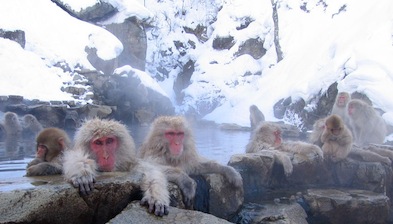 Macaque
monkeys enjoying natural hot
Macaque
monkeys enjoying natural hot
spring hyperthermia in Jigokudani, Japan.
Japan, China, and
Germany:
Japanese and
Chinese researchers have both
conducted extensive work in the far infrared
field over the past 30 years. The research
on hyperthermia in Japan was begun by the
Hyperthermia Study Group in 1978. In 1984,
the Japanese Society of Hyperthermic
Oncology (JSHO) was established.
"Compared to other countries,
Japan has the highest number of hyperthermia
equipment installed, and the most doctors
involved in hyperthermia therapy. The main
reasons for the advanced state of
hyperthermia research in Japan include the
development of excellent heating equipment,
high membership in JSHO, grant-in-aid by the
Japanese government, and coverage by
insurance for this form of therapy." - PubMed
8876910
German physicians and
hyperthermic oncologists have been
recommending and using whole-body
hyperthermia therapy for over 70 years with
well established clinics now attracting
patients and celebrities (actress Farrah
Fawcett documented her journey), from all
over the world.
Benefits.
The benefits of hypertherapy
are extensive and impressive. Research
from Sweden, Finland, Japan, China, and
Germany lists numerous conditions that can
be successfully addressed.
This list includes, but is
not limited to: arthritis, acne, cancer,
soft-tissue injury, menstrual pain, eczema,
upper respiratory infections, wound healing,
broken bones, Bell's palsy,
neuro-dermatitis, GI problems,
cardiovascular diseases, hypertension and
ear, nose and throat disorders such as sore
throat, chronic middle ear inflammation and
infection.
Present Day.
Whole body hyperthermia is constantly being
researched and updated whilst being used all
over the world to combat cancer, most
notably by hyperthermic oncology institutes
and clinics in Germany. Published data
worldwide has proven remarkable results and
is changing lives.
The USA continues
to lag behind, regarding it as experimental
and a threat to the extremely profitable and
conventional protocols of prescribed
synthetic drug cocktails, coupled with chemotherapy
and radiation.
Global success using
hyperthermia
for cancer tumors.
1) Klinic
St. Georg in Germany.
- www.klinik-st-georg.de
St. Georg clinic uses hyperthermic
oncology to increase the permeability and
receptivity of tumor cells to
chemotherapy. Hyperthermia therapy is a
very gentle but nevertheless very
effective protocol and is one of the basic
elements of the integrated cancer therapy
concept of Klinic St. Georg. During
hyperthermia therapy, tumerous tissue is
heated using different techniques.
As a
result:
- The cancer cells are damaged and
weakened.
- The body's own immunological defense
mechanisms are supported.
Hyperthermia
is applied alone, or recommended by
Western oncologists to be used in in
combination with radiation or
chemotherapy. Hyperthermia is also used
successfully in the aftercare for
secondary cancer prevention. Metastasis
and tumors that are inoperable or
resistant to other protocols can be
influenced favorably by Hyperthermia.
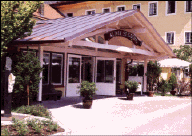
World
famous Klinic St. Georg,
Bad Ailing, Germany.
2) Private
clinics in Germany.
Several offer heat therapy for
cancer, including the Hyperthermia Center
in Hanover who write the
following:
"During
whole-body hyperthermia, the whole body -
with the exception of the head - is
overheated. In our practice we use water
filtered infrared lamps with a high
atmospheric humidity to generate heat. The
body reaches temperatures of between 39.5C
and 40.5C.
Our
patients experience whole-body
hyperthermia in a particularly beneficial,
integrated and healing environment. After
a preparation period of approximately half
an hour, the actual fever therapies
begins, lasting for around two and a half
hours. The patients receive comprehensive
care, with monitoring of their body
functions, throughout the procedure .
Strengthening Ayurvedic teas and
fortifying natural beverage are available.
The subdued lighting, relaxing music and
soft color hues of the new practice rooms
have a soothing effect on mind and body.
After the
healing phase, the patients enjoy a period
of rest in this environment, during which
their fever abates. They receive oxygen
for stabilisation, and can recuperate
through meditation. The practice team
takes care of the patient's well-being
throughout the entire time - and
afterwards too, as telephone support is
provided for all queries relating to
hyperthermia.
In our
experience, whole-body hyperthermia is
particularly effective for inoperable
tumors and metastases, and for frequently
recurring tumor types. However, it is also
used for limited tumor onsets. We have
successfully used whole-body hyperthermia
in our practice for mamma carcinomas,
sarcomas, skin tumors, melanomas, bone
metastases as well as carcinomas of the
lung, the stomach, pancreas, the
gallbladder and kidneys."
3) Prostate
Cancer.
In May 2000 a German researcher reported
that an experimental technique was used on
440 patients using "a probe inserted into
the rectum so cancer cells in the nearby
prostate gland may be heated and killed
with ultrasound".
The report goes on to say "A recent study
showed nearly 80% of the 440 men treated
had a cancer-free follow-up test, or
biopsy. Nearly all had a clear biopsy
after a second treatment of high intensity
focused ultrasound, or HIFU."
Source:
www.webmd.com

Lance Armstrong beat
testicular cancer. "Applying heat
might make other cancers as easy to
eliminate as testicular cancer, which
is foiled by body temperature." -
www.sciencenews.org
4) Hyperthermic
Oncology in Europe.
For nearly three decades, oncologists in
Europe have gathered together to discuss
the use of hyperthermia to address
cancer, as well as actually implementing
it. The two most prominent groups being
The International Clinical Hyperthermia
Society and The European Society for
Hyperthermic Oncology (ESHO).
About ESHO:
"The object of the European Society for
Hyperthermic Oncology (ESHO) is to
promote for the public benefit,
fundamental and applied research in
physics, engineering, biological and
clinical sciences relating to the use of
hyperthermia in cancer therapy.
Moreover, the society wants to
facilitate integration and exchange of
information between different
disciplines in the study of the
biological effects of heat in the
treatment of cancer either alone or
combined with other cancer treatment
modalities.
The European Society for Hyperthermic
Oncology was established in 1987 in
England. In 1992, the registered
office of the Society was transferred
to The Netherlands.
Board Members: G.C. van Rhoon (The
Netherlands), M.R. Horsman (Denmark),
GJ. van Tienhoven (The Netherlands),
O.J. Ott (Germany), T.L.M. ten Hagen
(The Netherlands), V. Kouloulias
(Greece), S. Dall'Oglio (Italy), L.H.
Lindner (Germany), M. Persson
(Sweden)." - www.esho.info
Extract from the
ESHO invitation to 28th annual meeting
in Munich, Germany, 2013:
"Over the last years, the field of
clinical Hyperthermia has become
increasingly dynamic. Results of phase
II and III studies as well as new
findings in basic research have firmly
established Hyperthermia as a protocol
option in conjunction with standard
regimens in the field of oncology."
- Conference held at
The Klinikum Großhadern of the
Ludwig Maximilians University of
Munich who have been using
hyperthermia cancer therapy since
1986.
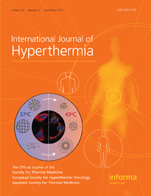
International
Journal of Hyperthermia - 1985 to
present day. Currently, it is the most
important periodical devoted to
hyperthermic oncology.
5) Hyperthermia
Journal.
International Journal of
Hyperthermia is the official journal of
the Society for Thermal
Medicine, the European Society for
Hyperthermic Oncology, and the Japanese
Society for Thermal Medicine.
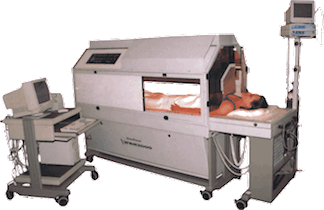
Oncothermia therapy
expands hyperthermia by also using a
modulated electrical field. This has
become one of the leading hyperthermia
based therapies in Europe.
6) Oncothermia
Developed in Germany, oncothermia stems
from Hyperthermia. Oncothermia is a
Hungarian invention from 1988, connected
to the bioelectric ideas of a Hungarian
Nobel Laureate for discovery of Vitamin
C, Albert Szentgyorgyi.
German, Hungarian and
Japanese scientists and engineers have
partnered up together conducting ongoing
research and development, distributing
this method worldwide. Known as the
Oncotherm Group, they hold International
symposiums in Europe and have multiple
publications available for personal
research.
Heat Therapy Clinical
Trials:
"In trials
reported in the May 2005 Journal of
Clinical Oncology, Theodore De Weese, a
radiation oncologist at Johns Hopkins
University, showed that heat therapy
could amplify radiation's effects. The
scientists recruited 109 cancer patients
with superficial tumors, such as those
in the skin of the head, neck, or
breast. Half the patients received
radiation alone, and the other half
received radiation plus two weekly
sessions of hyperthermia.
After several months, the
researchers found that about two-thirds of
the patients in the hyperthermia group
showed no lingering signs of their cancer.
In contrast, only 42 percent of patients
receiving just radiation had that
response."
- www.sciencenews.org
PubMed
has numerous medical citations on
hyperthermia from all over the world -
click on link to read one from the
Netherlands back in 2002.
'Heating the patient: a
promising approach' - PMID
12181239
Hyperthermia
Therapy in the USA.
The American Cancer Society, Stanford,
The National Cancer Institute:
If you
research hyperthermic oncology on the
internet, more and more information is
being made available. American medicine is
finally taking a look at this ancient
healing protocol and using it alongside
chemo and radiation.
Whilst
their chosen methods may seem crude, cause
side effects, and are expensive and
experimental, the use of hyperthermia in
the USA is now underway with even the
American Cancer Society discussing
hyperthermia and posting articles on their
website: www.cancer.org
There
are varied methods used to create
Hyperthermia, many of them are crude:
a) Thin heated wire probes,
hollow tubes filled with warm water, or
implanted microwave antennae and radio
frequency electrodes.
b) Magnets and devices that produce high
energy are placed over the region to be
heated.
c) Some of the patient's blood is removed,
heated, and then pumped into the region to
be heated. The process is known as
perfusion.
d) Hot wax.
Source:
Stanford Cancer Institute, USA.
American Cancer Society:
Other hyperthermia methods include:
"Whole-body heating is being studied as a
way to make chemotherapy more effective in
treating cancer that has spread. It can be
done using warm-water blankets, inductive
coils (like those in electric blankets),
or thermal chambers (similar to large
incubators)." - www.cancer.org
The Food
and Drug Administration approved a
microwave hyperthermia unit made in Utah,
USA (BSD 500 and BSD 2000), to be used
specifically for cancer management,
required to be used in tandem with
radiation or chemo.
The
National Cancer Institute (NCI)
website, cites the following:
1) Hyperthermia is a type of cancer
treatment in which body tissue is exposed
to high temperatures (up to 113°F) to
damage and kill cancer cells.
2)
Hyperthermia is almost always used with
other forms of cancer therapy, such as
radiation therapy and chemotherapy.
3) Several
methods of hyperthermia are currently
under study, including local, regional,
and whole-body hyperthermia.
4) Many
clinical trials (research studies) are
being conducted to evaluate the
effectiveness of hyperthermia.
The NCI
goes on to explain different methods of
hyperthermia using instruments such as
probes, needles, thermal chambers or hot
water blankets. The NCI is U.S.
government’s principal agency for cancer
research.
Read the
NCI Hyperthermia FACT SHEET
Hyperthermia,
although an ancient health protocol, is
considered today as a revolutionary
technology, changing the face of
conventional Western modalities who would
prefer the public not stray from their toxic
protocols and invasive
procedures which are not as effective as
they say, and have lasting side effects.
Japanese and German Far
Infrared heat therapy, is
available for everyone worldwide.
Far
Infrared Units are
available across Asia, the Pacific,
Europe and North America in the form
of lamps or sauna units. Traditional
sauna units still generate ' wet' heat
but have incorporated far infrared
ceramic plates or metal rods, a few
units use precious stones such as
amethyst or jade (a gimmick), whilst
the superior Japanese dome unit uses
pure far infrared 'dry' heat generated
via silicone crystal chips.
Far
Infrared heat does not burn the body
(as regular heat does), and does not
cause any recognized side effects when
used by itself. Far Infrared ray are
measured in microns, the most
beneficial being between 7-11 microns.
Hyperthermia is a totally
intergrative therapy which may be
used with other alternative and
conventional procedures and
protocols. Confer with a
professional medical specialist for
guidance.
Far
Infrared Thermal Therapy
History, technology, benefits.
Far
Infrared Facts and Data
Medical data, Japanese research.
Personal
Experiences
Mexico, Canada, USA.
|



